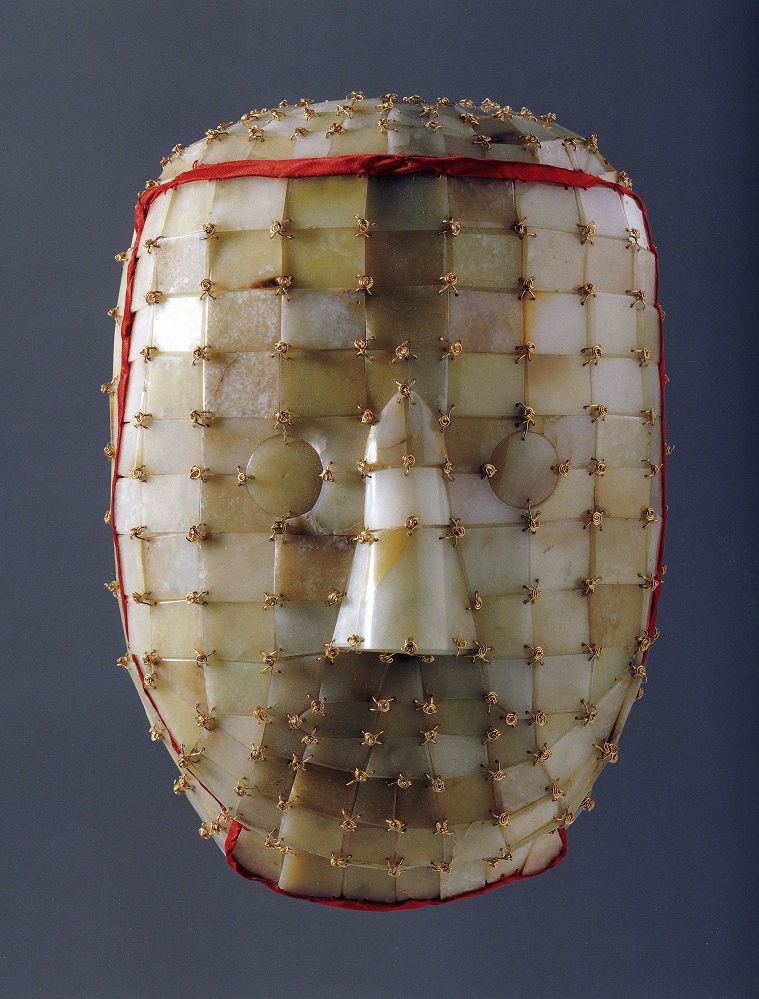Japanese Gallery Re-opens; Calligraphy Exhibition; Contemporary Japanese Ceramics
Kansas City, MO. Oct 11, 2017– The Fall of 2017 through Spring 2018 celebrates Asian art at The Nelson-Atkins Museum of Art in Kansas City. Four special exhibitions will offer visitors a stunning visual feast of Asian Art, supplemented by new displays of the museum’s internationally acclaimed collections.
“The Asian collections at the Nelson-Atkins are historically the anchor of our international reputation, with more than 10,000 works of art from China, Japan, Korea, and South and Southeast Asia,” said Julián Zugazagoitia, Menefee D. and Mary Louise Blackwell CEO & Director of the Nelson-Atkins. “Great visionaries and scholars began collecting Asian art for the museum in 1930, and we are fortunate to have some of the great iconic works in the United States. The upcoming exhibitions put a deserved spotlight on our vast holdings.”
Dreams of the Kings

On Dec. 16, 2017, the exhibition Dreams of the Kings: A Jade Suit for Eternity: Treasures of the Han Dynasty from Xuzhou opens in the Chinese Temple Room on the second floor of the Nelson-Atkins. The exhibition was organized by the China Institute in New York, where it was on view in 2017. Featured objects from ancient China include exquisite vessels fashioned from solid jade, a full suit of iron armor, a spectacular solid gold belt buckle and a magnificent, 2,000-year-old, life-sized jade and gold burial suit that is the finest to have survived. The objects were excavated from a group of monumental tombs of the Kings of Chu that were carved into rocky hillsides in an area midway between Beijing and Shanghai.
“The stunning jades in this exhibition, shown for the first time in the United States, demonstrate beyond argument why jade is China’s most precious material,” said Colin Mackenzie, Senior Curator of East Asian Art. “Visitors will be amazed by their workmanship and the mysterious ambience of their display in our world-famous Chinese Temple.”
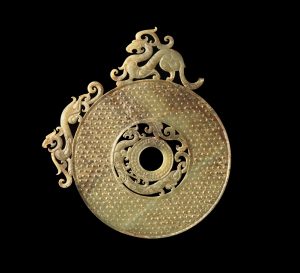
A selection of 90 pieces from the museum’s celebrated collection of early Chinese art from the Shang (16th century, ca. 1046 B.C.E.) to the Han (206 B.C.E.–220 C.E.) dynasties will be displayed in adjacent galleries. Included will be the world-famous jade bi ritual disc and many other exceptional pieces. Dreams of the Kings closes April 1, 2018.
Calligraphy Exhibition
More than Words: The Art of Calligraphy across Asia unveils the most prestigious art form of Asia, where calligraphy is held in greater esteem than painting or sculpture. Ranging in date from circa 1200 B.C.E. to the present, spanning Iraq to Japan, the exhibition opens Oct. 21, 2017 and runs through July 8, 2018.
“Beautiful scripts were first developed in Islamic cultures of West Asia to communicate sacred texts, but became revered as art forms in their own right,” said Kimberly Masteller, Jeanne McCray Beals Curator of South and Southeast Asian Art. “In East Asia, ancient ritual scripts evolved into elegant styles used for official communication, aesthetic contemplation, and personal expression.”
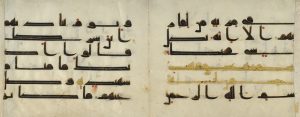
Comprising over 50 pieces drawn from the Nelson-Atkins’ holdings as well as loans from distinguished private collections, the exhibition includes a number of recognized masterpieces, including a 9th-10th century Qu’ran folio in the elegant Kufic script in ink and gold; a 6th-century Chinese Buddhist sutra; a composition by Mir ‘Ali al Sultani from the Muraqqa Gulshan for Emperor Jahangir; and superb examples by Ming Dynasty calligraphers such as Wang Duo (1592–1652) and Huang Daozhou (1585–1646), as well as Japanese Obaku monk calligraphers.
Japanese Galleries Re-opened
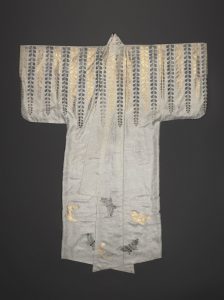
The Japanese Galleries at the Nelson-Atkins re-open on Nov. 18 after being closed for renovation. Designed by architect John Yeon in the 1970s, the galleries are considered a masterpiece of mid-century modern interior design. Yeon’s extensive use of wood paneling evokes traditional Japanese architecture but also reflects prevailing modernist taste, providing an ideal setting for the museum’s distinguished Japanese art collection. Upgrades to the lighting and deck surfaces, as well as a new digital interactive station, will enhance the visitor experience. The galleries will include some of the most celebrated Japanese works in the Nelson-Atkins’s collection, including spectacular screens and exquisite robes, as well as a recent acquisition, Vying Peacocks, created in 1929 by Japanese artist Ishizaka Kōyō, featuring a dramatic scene between competing peacocks that spans two massive six-panel folding screens.
Contemporary Japanese Ceramics from the Horvitz Collection
Modern and contemporary Japanese ceramics are showcased in Into the Fold: Contemporary Japanese Ceramics from the Horvitz Collection, in Gallery L7 in the Bloch Building through July 2019. Japanese potters of the 20th and 21st centuries are unrivalled for their inventive manipulation of clay and glaze. One of the finest collections of contemporary Japanese ceramics encompassing a wide range of styles from the rustic to the elegant will be the subject of three thematic installations. The first features a stunning globular vase enveloped in a brilliant blue glaze by Kimura Yoshirō that was inspired by the blues of the Aegean Sea and the sky of the Sahara Desert. This, and other works of striking modernity, contrasts with a group of tea ceremony vessels featuring traditional forms and glazes, including an iconic fan-shaped dish in Oribe style by Kitaōji Rosanjin.
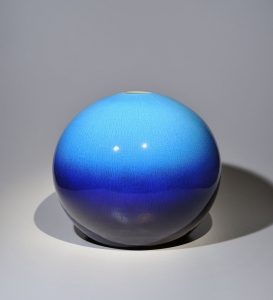
Programs and Festivals
A range of fun and educational Asian art-focused events will highlight the exhibitions and gallery re-opening. The events kick off with the museum’s annual Chinese New Year Festival on Sunday, January 28. Performances, talks and demonstrations will continue through April, including the popular Passport to India Festival, Sunday, April 15.
Laurence Sickman and the Asian Collection at The Nelson-Atkins Museum of Art
The Asian collection at the Nelson-Atkins includes more than 10,000 pieces, ranging from ancient Chinese bronzes, jades and painting through Indian sculpture to Japanese screens, and is one of the finest and most comprehensive in the United States. The collection is displayed in 15 elegant galleries on the second floor of the original 1933 Nelson–Atkins building. It has been celebrated for its high proportion of internationally acclaimed and widely published masterpieces. Credit for many of these is due to Laurence Sickman (1907-1988), the museum’s first curator of Oriental Art and one of the most prominent scholars of Chinese art of his generation. Many of the Chinese works were acquired while Sickman, after graduating from Harvard, was a student in China from 1930-1935. Among the masterpieces are Fishermen on a Mountain Stream by the great Song master Xu Daoning (ca. 970-1040), the world-famous Guanyin of the Southern Sea, and the Ming Dynasty (1368–1644) gilded and carved wood coffered ceiling in the Temple of Wisdom Attained in Being On his return to Kansas City, he continued to build the collections, particularly Chinese Buddhist sculpture and Ming Dynasty hardwood furniture, two of Sickman’s scholarly interests.
The South and Southeast Asian collections also include exceptional sculpture from the Gupta (ca. 320 to 550 C.E.) and Chola (9th–13th centuries) periods, and two folios from the Gulshan album, commissioned by the Mughal Emperor Jahangir (1605–1627) This album has been described by a leading scholar as “the most beautiful book ever created.” Japanese art includes fine ceramics, textiles and Buddhist art as well as important painted folding screens ranging from the Momoyama period (1573–1615) to a masterpiece by Shiokawa Bunrin (1808–1877), and a significant collection of woodblock prints by ukiyo-e masters such as Katsushika Hokusai (1760–1849) and Ando Hiroshige (1797–1858).
Image captions: Jade burial suit bound with gold wire excavated from the tomb of a King of Chu at Shizishan, Xuzhou. Western Han Dynasty (206 B.C.E.-9 C.E.), first half of second century B.C.E., 176 cm (69.29 in). This life-size jade burial suit is the earliest and finest so far discovered. It is made of 4,248 pieces of finely polished jade sewn together with gold wire. It was made for a king of the State of Chu, part of the Han empire, and was discovered in 1995 in his tomb at Shizishan (Lion Mountain), Xuzhou. Encasing the body in jade was believed to have a dual function: to protect the body from outside malign influences and to preserve it from decay.
Ritual Disc with Dragon Motifs (Bi). China. Eastern Zhou Dynasty (771-256 B.C.E.). Jade (nephrite) diam: 6 1/2 inches (16.51 cm). Purchase: William Rockhill Nelson Trust. 33-81.
Folios from a Qur’an. Iraq, Syria or North Africa. ‘Abbasid period (750–1258), 800s–900s. Ink and gold on vellum. 8 1/2 x 21 inches (21.59 x 53.34 cm). Purchase: William Rockhill Nelson Trust
Nō Robe with Design of Wisteria and Butterflies, Japanese, Edo period (1615–1868). Surihaku-type robe; gold and silver leaf stenciled on figured satin ground, 67 x 52 ¾ inches. Purchase: William Rockhill Nelson Trust, 32-142/5.
Kimura Yoshirō (Japanese, b. 1946), Blue-glazed Vase with Rippling Waves Pattern, 2014. Glazed porcelain, 16 ¼ x 19 x 19 inches. Collection of Carol and Jeffrey Horvitz. Photo: Randy Batista.
The Nelson-Atkins Museum of Art
The Nelson-Atkins in Kansas City is recognized nationally and internationally as one of America’s finest art museums. The museum, which strives to be the place where the power of art engages the spirit of community, opens its doors free of charge to people of all backgrounds. The museum is an institution that both challenges and comforts, that both inspires and soothes, and it is a destination for inspiration, reflection and connecting with others.
The Nelson-Atkins serves the community by providing access to its renowned collection of nearly 40,000 art objects and is best known for its Asian art, European and American paintings, photography, modern sculpture, and new American Indian and Egyptian galleries. Housing a major art research library and the Ford Learning Center, the Museum is a key educational resource for the region. In 2017, the Nelson-Atkins celebrates the 10-year anniversary of the Bloch Building, a critically acclaimed addition to the original 1933 Nelson-Atkins Building.
The Nelson-Atkins is located at 45th and Oak Streets, Kansas City, MO. Hours are Wednesday, 10 a.m.–5 p.m.; Thursday/Friday, 10 a.m.–9 p.m.; Saturday, 10 a.m.–5 p.m.; Sunday, 10 a.m.–5 p.m. Admission to the museum is free to everyone. For museum information, phone 816.751.1ART (1278) or visit nelson-atkins.org.
For media interested in receiving further information, please contact:
Kathleen Leighton, Manager, Media Relations and Video Production
The Nelson-Atkins Museum of Art
816.751.1321
kleighton@nelson-atkins.org
